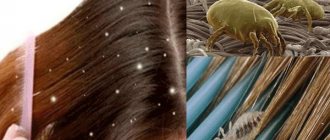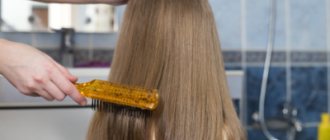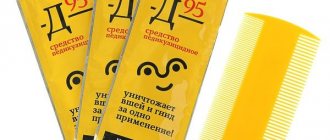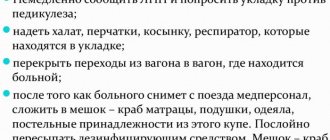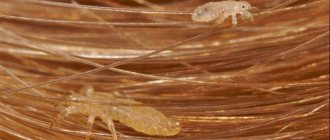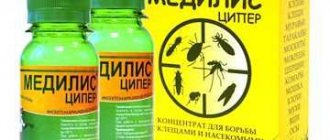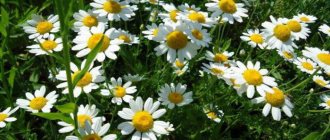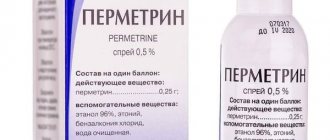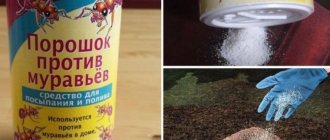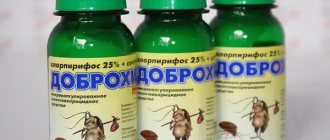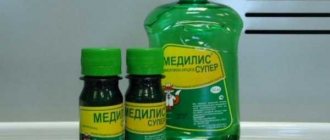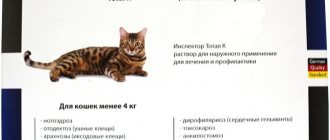Pediculosis is a disease caused by parasites such as body louse, head louse, and pubic louse. They are also carriers of typhus, relapsing fever, and Volyn fever. Those infected feel itching, a rash appears on their skin, rough areas appear, and pigmentation changes. In advanced stages, tangles form in the hair, an increased body temperature is observed, and the lymph nodes become enlarged. The seriousness of this disease is added by the high level of infection among the population: after all, only the clothes of the sick person will be a source of infection for another 3 months.
Order of the Ministry of Health No. 342
Thus, seemingly harmless lice is a socially dangerous disease that can quickly develop into an epidemic. We should not forget about the danger that the disease disrupts the harmonious functioning of the circulatory and nervous systems. If a pulmonary thrombus forms, it can be fatal.
Order No. 342 on pediculosis (anti-pediculosis styling is one of its constituent points) was adopted by the Ministry of Health of the Russian Federation in 1998. Its action is aimed at a comprehensive fight against the pathogens of pediculosis and typhus epidemics. It contains the following components:
- Prevention of typhus.
- Treatment of lice.
- Fighting pathogens.
- Measures to improve the epidemiological situation, sanitary and hygienic conditions in public institutions.
Let's look at anti-pediculosis styling in detail, an order for pediculosis.
Prevention of lice
Appendix No. 4 to this order prescribes the following measures to prevent the spread of lice:
- Routine examinations of the population by health workers in kindergartens, schools, dormitories, boarding schools, nursing homes, etc.
- Creating the necessary conditions to prevent the spread of lice during collective living: baths, showers, laundries with hot water, sanitary inspection rooms.
- Availability of adequate medical personnel to conduct examinations.
- Appropriate measures in foci of head lice infection.
- Explanatory educational program among the population.
Inspection for lice
According to Order No. 342 on pediculosis, anti-pediculosis styling can be avoided by preventing the spread of infection. The best preventative measure is inspection. It is carried out in a well-lit room using a magnifying glass or magnifying glass. The physician should pay great attention to the back of the head, temples and forehead.
The order recommends checking the following persons first (ideally four times a year):
- pupils of kindergartens, boarding schools;
- students of schools, secondary and higher professional institutions;
- teams of organizations, enterprises;
- patients admitted to hospital;
- residents of communal apartments and hostels;
- medical workers in contact with patients.
Final stage
Completing the procedure:
- burn the paper over which the combing was carried out;
- remove the patient’s clothes and underwear and place them in an oilcloth bag; carry out the same manipulations with the clothes of the nurse who was involved in the treatment;
- send the bags to a disinfection chamber;
- treat the comb with alcohol;
- treat the premises with an insecticidal preparation.
At the end of the procedure, the nurse must fill out a lice examination log and make a corresponding note in the patient’s outpatient record. A re-inspection is carried out after 7 days, and additional treatment is performed if necessary.
In cases where body lice are detected, hygiene procedures are prescribed, and all the patient’s belongings are subject to heat treatment. It is recommended to sanitize the apartment. After removing the parasites, the medical worker conducts explanatory conversations so that the patient cannot get lice again.
Order on pediculosis No. 342: anti-pediculosis styling
Many people are concerned about the fight against parasites that have already infected humans. The modern composition of anti-pediculosis styling is as follows:
- Bag for collecting the patient’s belongings: cotton or oilcloth.
- A galvanized tray or bucket where hair will be disinfected.
- Oilcloth bedding for manipulations.
- Latex gloves.
- A fine metal comb.
- Scissors and/or hair clipper.
- Alcohol lamp.
- 2-3 scarves.
- Disposable robe.
- Cotton pads.
- Table vinegar.
- The main elements in the composition of anti-pediculosis styling are means of destroying pubic and head lice: Ovicides for one-time treatment: shampoos, lotions, emulsion concentrates, etc.
- Neovicides (drugs with incomplete ovicidal action) for 2-fold treatment within a week to ten days. These are special soaps, shampoos and other products.
How is processing carried out?
Sanitation is carried out in a separate room. It should be well ventilated. The nurse's tactics when performing disinfestation are determined by the degree of infection of the patient, and therefore a treatment regimen for the patient is prescribed. Preparatory work involves performing a number of activities:
- cover the couch with oilcloth material and seat or lay the patient on it, having first put a pearl on him and a tourniquet around the hairline;
- explain to the patient the process of the upcoming manipulation;
- The medical worker conducting the procedure must put on an additional gown, gloves, a mask and prepare all the necessary equipment: anti-pediculosis agent, hair scissors, a basin in 2 copies, bags for disposal and subsequent disinfection, a comb, vinegar.
Anti-pediculosis treatment
Treatment algorithm for pediculosis:
- Prepare a solution to kill parasites in accordance with the instructions.
- Consistently treat hair against lice, avoiding contact of the product with mucous membranes and face. Each strand should be processed separately.
- If your hair is long, put it in a bun and cover it with a plastic scarf.
- Maintain exposure according to the drug manufacturer's recommendations.
- After the specified time has passed, rinse off the product with warm water, after removing any remaining product, wash your hair with detergent shampoo and rinse with a vinegar solution.
- After applying the vinegar solution, tie your hair with a plastic scarf and leave it in this state for 15-20 minutes.
- Rinse your hair again with warm water and dry with a towel.
- Place the patient on a chair and place paper on the floor to make it easier to dispose of insects later. Be sure to comb out dead insects and nits using a fine-tooth comb.
- Periodically remove adhering parasites from the comb using a cotton swab soaked in alcohol.
- At the end of the procedure, re-examine the patient and make sure there are no lice and nits.
- If necessary, re-treatment of hair for pediculosis is prescribed.
Application of anti-pediculosis styling
According to Order No. 342 on pediculosis, anti-pediculosis styling is recommended to be used as follows:
- The person carrying out the treatment must wear a gown, a protective scarf and gloves.
- The patient is wrapped in oilcloth.
- The patient's eyes are protected with a towel folded in several layers to protect against the ingress of drugs.
- Carefully treat the patient's hair with the product, then cover his head with a cap for the time specified in the instructions for the drug.
- After treatment, the hair must be rinsed under running water.
- Next is the use of shampoo included in the styling.
- After the hair is dried, each strand should be combed with a sparse comb to look for eggs or dead lice.
- Re-examination of the patient to determine the success of the procedure.
- Treating the comb with alcohol or boiling water.
- Treating the premises with a pest control compound.
- The patient's belongings are placed in a special bag for further disinfection.
- The worker's gown, gloves, headscarf, as well as other disposable items used in the procedure are placed in a separate bag and disposed of.
In what cases is processing carried out?
Pediculosis is usually detected in the emergency department at the sanitary inspection station.
If it is possible to detect adult lice and nits in the hair, an additional examination of personal hygiene items and the patient’s belongings is carried out. The patient is transferred to a closed room and examined on a couch. The procedure for getting rid of lice is carried out in an inpatient department. Disinsection measures include comprehensive measures to destroy parasites in hair, body, and clothing. Pediculosis
Contraindications for treatment may include:
- children under 3 years of age;
- pregnancy, lactation;
- serious condition of the patient;
- a large number of purulent wounds on the skin.
When pediculosis is detected, it is necessary to fill out the appropriate papers in which the patient gives his permission to carry out the procedure. Anti-lice medications are allocated either from the medical fund or purchased at the expense of the patient. The actions of a nurse in case of head lice are limited to preparing and carrying out sanitation, filling out a log in which the data is displayed in table form, and notifying the patient’s relatives.
In cases where lice are detected in children, the health worker reports to the preschool or school institution. According to the new Sanpin on the prevention of lice, an unscheduled inspection is carried out in the class and group, and preventive measures are taken to prevent the spread of lice.
Effective means
The following products are effective in styling:
- vinegar solution;
- 20% benzyl benzonate emulsion;
- pyrethrum powder;
- 5% boric ointment;
- 0.15% solution of karbofos;
- dust or tar soap;
- Medifox;
- lotion "Nitilon", "Loncid", "Nittifor".
For things:
- soda ash;
- "Medifox-Super";
- 50% concentrate of sulfidos, karbofos;
- pyrethrum powder;
- 20% water-kerosene-soap emulsion.
PRODUCTS FOR DESTROYING PYRETHROID-RESISTANT HEAD AND PUBIC LICE
Polydimethylsiloxanes
- pediculicide "HEDRIN" 77.99.1.2.U.4547.6.10 dated 06/29/2010 dimethicone - 4% "Thornton and Ross Ltd.", "Thornton and Ross Ireland Ltd." (Great Britain)
- pediculicidal agent “D-95” of the trademark “911 Your Rescue Service” RU.77.99.88.002.E.002023.04.17 dated 04/27/2017 dimethicone 87.7%; CJSC "TWINS Tech", (Russian Federation)
- pediculicidal agent "Nyuda®" RU.77.99.88.002.E.012895.12.14 dated 12/29/2014 dimethicone 92%, Germany
- pediculicidal agent "Paranit® Sensitive" (Paranit® Sensitive) RU.77.99.88.002.E.004749.06.14 dated 06.20.2014 oxyphthyrin complex, including dimethicone -4% "Cefaro Ireland Limited", (Ireland) and "Megenix Benelux" » (Belgium) «Laboratories Wilson» (France)
- pediculicidal product “Hedrin Once (Hedrin Vance)” in two forms Liquid Gel (liquid gel), Spray Gel (spray gel) RU.77.99.88.002.E.010406.11.15 dated November 26, 2015 dimethicone, 4%, nerolidol, 2% ; "Thornton & Ross Ltd", (UK)
- pediculicidal agent “Full Marks” (“Full Marks”), RU.77.99.88.002.E.000357.01.18 dated 01/26/2018 isopropyl myristate -50%, cyclomethicone 50% “Reckit Benckiser Healthcare” (UK)
- pediculicidal agent “Nitolic” (“Nitolic”), RU.77.99.88.002.E.000462.02.18 dated 02/01/2018 isopropyl myristate -72.5%, “ICB Pharma” (Poland)
- pediculicidal agent - “Clean Life” RU.77.99.88.002.E.005564.07.13 from 07/08/2013 polydimethylsiloxanes, 47%; LLC "NPO "VELT", (Russian Federation)
- pediculicidal product "Duranit anti-pediculosis lotion for hair" RU.77.99.88.002.E.005135.06.13 from 06.28.2013 dimethicone - 6%, cyclopentaxyloxane - 94%, "Drog Ekza Tibbi Malzeme" (Turkey)
- pediculicide "PARADISE ULTRA" RU.77.99.88.002.E.002037.05.18 dated 05/21/2018 dimethicone, 4%, isoparaffins, 96%, Mirrolla LLC, (Russian Federation)
Mineral oils
- pediculicidal agent “Shampoo “Deparazin® Ultra” RU.77.99.88.002.E.000369.01.16 from 01/28/2016 petroleum jelly, 56.5%; BIOPHARMRUS LLC, (Russian Federation)
- pediculicidal product “Shampoo “Pedikulen Ultra” RU.77.99.88.002.E.008118.09.14 from 09.19.2014 petroleum jelly - 55%; BIOPHARMUS LLC, (Russian Federation)
- pediculicidal product Paranit® Shampoo (Paranit® Shampoo) RU.77.99.88.002.E.012487.12.14 dated 12/22/2014 clearol (mineral oil) - 69.25%; Chefaro Ireland Limited, (Ireland) Chefaro Ireland Limited, Ireland (Ireland) and Megenix Benelux (Belgium) Bittner Pharma LLC, (Russian Federation)
- pediculicidal product Paranit® Lotion (“Paranit® Lotion”) RU.77.99.88.002.E.012486.12.14 dated December 22, 2014 isopar (mineral oil) - 96%, dimethicone - 4%, Chefaro Ireland Limited, (Ireland) Chefaro Ireland Limited, Ireland (Ireland) and Megenix Benelux (Belgium) Bittner Pharma LLC, (Russian Federation)
- pediculicidal product Paranit® Spray (“Paranit® Spray”) RU.77.99.88.002.E.012485.12.14 dated December 22, 2014 isopar (mineral oil) - 96%, dimethicone - 4%, Megenix Benelux (Belgium) LLC " Bittner Pharma", (Russian Federation)
Benzyl benzoate
- pediculicidal agent "Foxilon spray" RU.77.99.21.002.E.011175.07.12 dated 07/05/2012 benzyl benzoate, 20% NPC "FOX & Co" LLC, (Russian Federation)
- pediculicidal agent "Foxilon lotion" RU.77.99.01.002.E.027606.07.11 dated 07/18/2011 benzyl benzoate, 20% Scientific-Production LLC, (Russian Federation)
Neem oil
- pediculicidal product "Leisner" RU.77.99.88.002.E.001143.03.17 from 03/09/2017 neem oil 10%, "Pronova Laboratories BiVi", (Netherlands)
Essential oils
- pediculicidal agent “Paranit” RU.77.99.27.002.E.043822.10.11 dated 10/20/2011 anise oil (in terms of trans-anethole), 15%, “Teva Pharmaceutical Industries”, (Israel)
- insecticidal agent "MEDILIS-bio for lice" RU.77.99.37.002.E.002102.02.11 dated 02/09/2011 clove oil - 10% LLC "Laboratory MediLIS", (Russian Federation)
- pediculicidal product "Pedikulen® Ultra" RU.77.99.88.002.E.007718.08.13 dated 08/27/2013 anise oil - 6 LLC "BIOPHARMUS", % (Russian Federation)
Alcohols
- pediculicidal product "Hedrin Treat & Go" in three forms Lotion (lotion), Spray (spray), Mousse (mousse) RU.77.99.88.002.E.010405.11.15 dated November 26, 2015 1.2 octanediol , 5%, caprylic/capric glycerides (PEG 6) 15%; Thornton & Ross Ltd. (Great Britain)
Organophosphorus compounds
- insectoacaricidal agent "Sulfox" RU.77.99.21.002.E.012445.08.12 dated 08/10/2012 fenthion 20% k.e. LLC NPC "FOX & Co", (Russian Federation)
- insectoacaricidal agent “Dobrokhim FOS” RU.77.99.88.002.E.006398.08.13 dated 08/05/2013, fenthion 20% e.e. LLC "Dobrokhim", (Russian Federation)
- insectoacaricidal agent "Medilis-super" RU.77.99.88.002.E.017368.12.12 dated 12/25/2012 24% e.e. water-based fenthion LLC "Laboratory MediLIS", (Russian Federation)
- insectoacaricidal agent Medilis-Permifen" RU.77.99.88.002.E.008546.10.13 dated 10.23.2013 20% e.e. (fenthion - 16%, permethrin - 4%) LLC "Laboratory MediLIS", (Russian Federation)
- insecticidal agent "Forsyth - anti-louse" RU.77.99.21.002.E.012959.08.12 dated 08.28.2012 10% q.e. mixtures of fenthion and permethrin. (fenthion - 7%, permethrin - 3%) Alina Nova Prof LLC, (Russian Federation)
- insectoacaricidal agent “Clinch” 77.99.23.2.U.341.1.10 dated 01/26/2010 mixture of fenthion and permethrin 20% a.e. (fenthion - 7%, permethrin - 13%) Dobrokhim LLC, (Russian Federation)
- insectoacaricidal agent "Medilis - Malathion" RU.77.99.88.002.E.005275.06.13 dated 06.28.2013 40% e.e., malathion LLC "Laboratory MediLIS", (Russian Federation)
- insectoacaricidal agent “Dobrokhim M” RU.77.99.88.002.E.000104.01.14 dated 01/15/2014 malathion 57% ke., Dobrokhim LLC, (Russian Federation)
- pediculicidal product “Veltotrin Lotion” RU.77.99.19.002.E.006964.04.12 dated 04/23/2012 permethrin, 1%, malathion, 0.3%; LLC "NPO "VELT", (Russian Federation)
Appendix 2
Prevention of lice and pediculosis
We reviewed Order No. 342, anti-pediculosis styling. Finally, let’s see what effective preventive measures this document recommends:
- Periodic bathing with mandatory washing of hair - at least once every 10 days.
- Change of bed linen - at least twice a month.
- Systematic washing of clothes and personal items as they become dirty, followed by treatment with an iron with a “steam” function.
- Daily combing of hair, cutting as necessary.
- Cleaning outerwear items and following the rules for storing them.
- Periodic wet cleaning of the house.
- Keeping your home clean.
Order No. 342 of the Ministry of Health of the Russian Federation offers effective measures for the prevention, treatment, and detection of head lice and typhus. It also contains a special anti-pediculosis composition that helps to quickly deal with the problem.
Algorithm of actions
Algorithm of actions for pediculosis
Hair styling for pediculosis begins with preparatory procedures. The room should be well ventilated. A bandage from a scarf is tied on the patient's head along the hairline to prevent the product from getting on the skin or in the eyes.
Put on a gown and rubber gloves, prepare the solution according to the instructions. Put an oilcloth on the patient. The hair is distributed into strands.
- Treat hair with anti-lice medication.
- Long hair should be styled in a bun.
- A special plastic cap is put on top.
- Leave for the time specified in the instructions.
- Wash off with plenty of water and use shampoo.
- Dilute the vinegar, rinse your hair, put on the cap again, and leave for 15 minutes.
- Rinse again.
- Dry with a towel.
- Comb out dead lice and nits. It is advisable to use a special comb for these purposes.
- Check hair after styling.
A re-examination is carried out after a week. After 14 days, it is recommended to repeat the procedure to consolidate the result. Linen is subject to thermal and chemical treatment.
